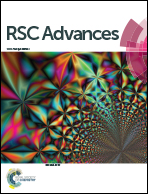Radioprotective effects of active compounds of Acanthopanax senticosus from the Lesser Khingan Mountain range in China
Abstract
Bioactive compounds including polysaccharides, flavones, syringin and eleutheroside E were extracted from wild Acanthopanax senticosus to obtain purities of 88.4% ± 3.2%, 90.8% ± 2.0%, 92.5% ± 1.5% and 82.7% ± 4.7% respectively. In vitro antioxidant activities and in vivo anti-radiation activities of the compounds were investigated and compared. The results demonstrated that polysaccharides and flavones extracted from A. Senticosus were more effective than syringin and eleutheroside E in their radical scavenging activity in vitro. In vivo studies showed that polysaccharides and flavones were also effective in protecting mice from heavy ion radiation induced tissue oxidative damage. Furthermore, the activities of polysaccharides and flavones in repressing expression changes of radiation response proteins including heat shock protein, disulfide-isomerase and glutathione S-transferase, were also identified by our results. These radioprotective effects were more significant when polysaccharides and flavones were administered together.


 Please wait while we load your content...
Please wait while we load your content...